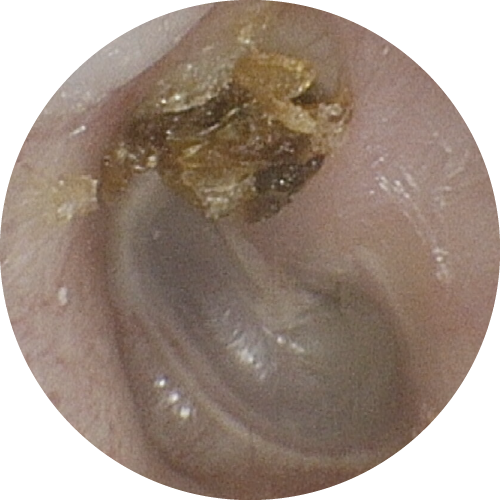Case III: cholesteatoma (L) - axial view
Case description
A 52-year-old male patient with previous surgery for cholesteatoma (Ch) in his right ear was brought in for follow-up imaging and a hyperintensity was noted in the diffusion-weighted magnetic resonance image (MRI) in his left, unoperated ear. Upon endoscopic examination of the left ear, the tympanic membrane (TM) with flares of keratin debris at the pars flaccida (PF) revealing the early stages of an attic cholesteatoma. In the endoscopic image, the malleus (M) handle and umbo (U) are clearly visible, and the posterosuperior aspect of the tympanic membrane (TM) is bulging out. The patient has also developed a moderate conductive hearing loss in his left ear as shown in the audiogram.
.png)


.jpg)

/coronal_FOV(25)/original/image_00000.jpg)
/sagittal_FOV(25)/original/image_00000.jpg)
.png)
/axial_FOV(25)/original/image_00000.jpg)